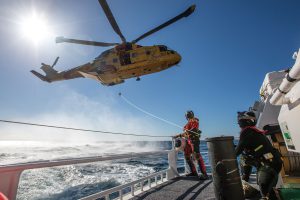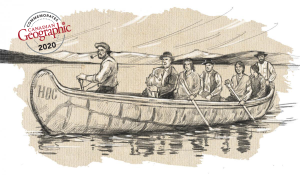A Canadian rover is planned to land on the surface of the moon within the next five years, François-Philippe Champagne, Minister of Innovation, Science and Industry announced yesterday. It will be the first Canadian rover to have ever landed on the moon.
Conducted in partnership with NASA, the unmanned Canadian Space Agency rover will explore a polar region of the moon — and attempt to survive an entire lunar night (about 14 Earth days), the extreme cold and dark posing significant technological obstacles. The rover will collect imagery, measurements and data of the surface of the moon, as well as showcasing Canadian instruments and technology.
As a first step, the CSA will put out a call for proposals from two Canadian companies to develop concepts for the rover and science instruments for the mission.
The announcement, made yesterday, fell on the day of the first total lunar eclipse in more than two years. In the announcement, Champagne also pledged $3 million in funding in technology initiatives for lunar exploration through the Canadian Space Agency.
“By investing in Canada’s vibrant space sector, we are giving Canadian entrepreneurs, creators, engineers, scientists and researchers the opportunity to advance science and technology, and be part of the growing global space economy,” says Champagne. “The results of these efforts will improve life for everyone, in space and on Earth. They will also put Canada at the forefront of space innovation while creating the good jobs of tomorrow.”
The funding will go towards testing cutting-edge Canadian technologies in luna orbit and on the moon’s surface. Three Canadian companies — Mission Control Space Services, Canadensys Aerospace Corporation and NGC Aerospace Ltd — will be given the opportunity to demonstrate technologies such as navigation and computing, a lightweight and energy-efficient 360° camera and a planetary navigation system.
This is the latest in a series of investments into various aspects of lunar missions and research since early 2020, totalling $36.5 million. The CSA will also be supporting scientific research being conducted in universities across Canada, including a research program to address key scientific questions related to geology, geophysics and prospecting — the three highest priorities defined by the Canadian planetary science community.
The funding comes under the CSA’s 2019 Lunar Exploration Accelerator Program’s pledge to invest $150 million over five years. It’s aim is to position Canada’s space sector to “seize the opportunities of the future, and thrive in Canada and abroad.”





